Cookie-less Internet - Step in the direction to data privacy, but not the end of the road
Cookies or the small pieces of data which are stored as you browse through the Internet are the bread and butter of digital advertisers. This data may include information like website configuration, login details, email IDs and addresses. First Party Cookies are created and stored on the domain/website that you are visiting. Third Party Cookies are created and stored by websites other than the one you are visiting directly.
To understand how Third Party Cookies are created, a blog on the website Clearcode says,
“In order for a third-party cookie to be created, a request needs to be sent from the web page to the third party’s server. The file being requested is different depending on the use, but it can be an actual creative (an ad) or a tracking pixel, which is completely invisible to the user but acts as a tracking cookie in situations when there is no click event (for instance, when just a web page is opened) and click redirects cannot be used.”
Now, web cookies are supported by all browsers, even the ones which are not ad supported, because they help personalise the user experience. Most browsers allow the user to delete web cookies and even block the creation of Third Party Cookies even though this is not the default option.
Earlier this year, the world’s most popular web browser Google Chrome announced that it would begin blocking Third Party Cookies by default, going the way of privacy first browsers like Apple’s Safari and Mozilla Firefox. When an advertising company took such a stance it rang the alarm bells for digital marketers who relied on this data that Third Party Cookies were on their way out.
Adgully organised a Twitter Chat on December 4, 2020 to understand how digital marketers would ‘Navigate a Cookie-Less Future’. The discussion was joined by veterans in the digital marketing industry:
Ahmed Naqvi, Cofounder and CEO, Gozoop (@ahmedaftabnaqvi)
Anish Mulani, Director and CEO India, Wave (@MulaniAnish)
Harsh Vakharia, Co-Founder, InVideo (@harshvak)
Navin Madhavan, VP & GM, Growth Marketing Platforms, InMobi (@madnavin)
Neena Gupta, CEO, Zirca Digital Solutions (@nddasgupta)
Vivek Pandey, VP, Revenue Strategy & Analytics, Times Internet (@Pvivek)
A privacy-first world rather than a Cookie-less world
Harsh Vakaria: A Cookie-less future is inevitable, adhering to upcoming data privacy regulations with growing demand of user privacy. Cookie-oriented methods expose consumers’ data and privacy across the ad-tech platforms and hence, Cookie-less future seems like the way forward.
Anish Mulani: Third Party Cookies are being phased out with regulations tightening on them. Most browsers today allow turning them off but not by default. It may become a default experience for users in the coming time, ‘when the user privacy is put above all’.
Navin Madhavan: The right way to think of this new world is as a privacy-first world rather than a Cookie-less world. Identifying and targeting/ reaching users will still be possible, but user consent takes precedence in this world.
Eliminating cookies alone doesn’t take us into world where user data is protected though. Important to implement consent management in the right fashion and provide transparency to users, as they have a right to know what and where their data is getting used.
Vivek Pandey: A Cookie-less future seems to be the promising answer for data and consumer privacy, however, it may come with its own challenges such as finding the right innovation to replace cookies for retargeting and other uses, if at all.
Advertising policies focusing on transferring back the control of information to consumers are expected to see light of the day. However, there may be a lag factor across geographies such as India.
Phasing out Third Party Cookies is only part of the disruption
Neena Dasgupta: The implication will be there only if adoption of Blockchain, that allows transparency & tracks consumer journey across the digital ecosystem, is low. It’s critical for data privacy to have acceptance from demand and supply to create data sets that get matched for necessary parameters.
Ahmed Aftab Naqvi: Giving the choice and control to the user on how their data is being used will increase trust. A Cookie-less future will spark more creativity in media.
Vivek Pandey: 1P data is still there to be leveraged. So, customers will find the tailoring more ethical and less surprising now, reducing their FUD (fear, uncertainty, doubt) over ‘snooping’.
Navin Madhavan: Cookies are the currency for user identity. If you thought ads were irrelevant today, things will get worse as platforms will need to innovate for targeting in their absence. If ad revenues decline, publishers (Website/ app owners) could move into a paywall first world.
Also, existing fraud detection mechanisms will become irrelevant in this world and will have to be redefined as notion of user identity will be redefined. Transparency, measurement and fraud will have to be revisited as things evolve in this world.
Harsh Vakaria: Frauds like cross site scripting, session fixation, cross site request forgery attack, etc., will be greatly reduced in a Cookie-less internet.
User Experience: TP cookies positively impact user experience with relevant ads, also gives the web free content funded by these ads. Flip side is that to show these relevant ads, cookies invade user privacy by tracking user behaviour across the web.
Transparency: Tracking third-party cookies also helps in tracking your activity across certain websites, thereby invading user privacy. A Cookie-less future will help the user get it back.
Are digital marketers prepared for a Cookie-less future?
Neena Dasgupta: Cookies mean nothing unless linked to mindsets, which is the new paradigm, where offline and online get integrated, a great information architecture.
Ahmed Aftab Naqvi: The writing was on the wall and smart companies have already started building alternate solutions for a Cookie-less future.
Solutions like, Privacy Sandbox, which is Google’s proposal to move all user data into the Chrome browser, where it will be stored and processed ensuring that data stays on the user’s device and is privacy compliant, are coming up.
More such alternative tools will come up for advertisers that more heavily leverage first-party cookies and lump visitor profiles into more anonymous “segments”.
Anish Mulani: In the short-term, yes, but with innovations a balance can be established where user consent and privacy are protected and if users are approached, then it is with consent.
Vivek Pandey: It will clean up the programmatic value chain a lot, which I think is anyways the intent. All that was bad about programmatic, like shady networks, opaque metrics, will bleed the most, and deservedly so.
No one will mourn anything, except those who relied too much upon tricKPIs. Probabilistic ID graphs, Pixel Syncing, FLoCetc will allow targeting to go on. Brands working with premium publishers like Times Internet will rejoice in 1P data solutions at their disposal.
Harsh Vakaria: With the loss of third party cookies, the very base of programmatic real time buying method will be missed dearly. This will impact their ability to tag user behaviours from across the Internet and target them for specific ad communications, and advertisers.
Navin Madhavan: Marketers are already prepared and ready to move in this direction. Large brands have invested significantly into collecting, managing and building out first-party data (developed markets are ahead of the curve).
Ecosystem players such as Liveramp, Trade Desk and others are playing an active part to help brands with this transition. The initial results look very positive and it seems to be only a matter of time before we scale these initiatives up to ensure better user coverage.
Digital architecture of Internet revamped around 1P Data
Neena Dasgupta: Possibly redesign some bits after consumer research to add scripts that give choice to their consumers, while serving consumer relevant content for better UI/UX experience other than linking mind-set and behaviour data.
To form the backbone of all media conversations – format, nature, length, depth and the complete journey, customisations basis mindset will be the norm; for the architecture and redesign will allow for mindset based navigation.
Ahmed Aftab Naqvi: Data clean room products being produced by the walled gardens – Facebook, Google and Amazon – that allow for the combination of first-party data sets with their own data have the potential to help marketers solve measurement as well as privacy issues.
If marketers and publishers are already collecting data with the users consent, they needn’t worry about restructuring. For those who haven’t put in this model, there is no way out – they will have to rebuild or refine.
Walled gardens are better than bandit infested jungles, where you are always at risk of data theft
Harsh Vakaria: In the future, as the mediators will exit the system with the death of third-party cookies, there will be more opportunities for partnerships and collaborations between companies to share relevant first-party data!
Vivek Pandey: They may have to rebuild if they didn’t build correctly in the first place. Micro-services based tech stacks will seamlessly glide through while poorly designed products will have huge tech debts.
Data collection anyways should not be a primary purpose of products. Products exist to delight consumers and are able to collect data as collateral along the way. Only data that is willingly/ happily given is rewarding. The rest backfires.
Navin Madhavan: Either as advertisers or as publishers, if you have to build and deliver experiences that suit user’s better you have to move to collecting consented user data. There will be a rise of companies and vendors who will work on consent management and handling first-party data.
Either publishers build their own mechanisms to bring user data onto their platforms or use such vendors to make sure they are able to collect first-party data with consent and in a privacy compliant way.
Anish Mulani: There may be walled garden with gates, which are opened with user consent.
Impact on digital advertising spends
Vivek Pandey: The old gives way to the new. Exciting innovations are coming up that will make people forget the benefits of 3P cookies. Take 5G for example. With 100X bw of 4G, so many new things become possible now, like hires content and real time AI/ML. These benefits will compensate for some loss of targeting.
Navin Madhavan: There is a definite short-term impact on ad exchanges. In the absence of targeting and measurement, inaccurate ads lead to lesser performance for advertisers and thus, lesser revenue for publishers. Digital as a medium stood out for measurability, which changes (a bit) with this.
Walled gardens will also see a splurge in ad spends as they are independent of cookies. Their existing user data (user ids, affinities, likes, preferences) can be used to target and attribute ads in the right fashion, which exchanges can’t (as of today).
Harsh Vakaria: AdEx is a function of ROI. The lesser the ROI, the less will be the spends. With Cookie-less Internet, advertisers will lose the sharpness in relevant audience targeting. This means less ROI and high spillage!
Neena Dasgupta: It will lead to the need for questioning more by demand partners. It’s wiser to be clear than to feel cornered. Lack of trust will lead to flake, the cost of which will be with the demand partner. Everyone trying own way may cause misinformation.
I suggest using ways that link consumers from offline research to online using Blockchain. That’s insulation and efficiency at no cost. In the long run, the medium will give ROI because the new paradigm will be conversations and not advertising.
Who benefits – platforms or advertisers?
Ahmed Aftab Naqvi: I see increasing conversion rates as the first-party data from the advertiser’s site, CRM tools, foot-traffic, and in-app data will have more relevant data of the user who has shown interest in a product or service. The one who is most keen is the user and governments, not the platform, not the advertiser.
Harsh Vakaria: This will make the process of reaching out to relevant audience quite expensive. A lot of traffic needs to be brought in first on the website or app and then refined to retarget this user back on ad platforms.
Navin Madhavan: I think both players understand the importance of moving to a first-party data led world to improve the efficacy of marketing. Platforms and advertisers can choose to either fall back to non-targeted advertising leading to poor results or solve for identity at their end.
Most effective way to solve this problem is through first party data from brands (any non-PII identifiers such as hashed emails/ numbers and so on) collected with the right consent mechanism to permit the use of this data for advertising.


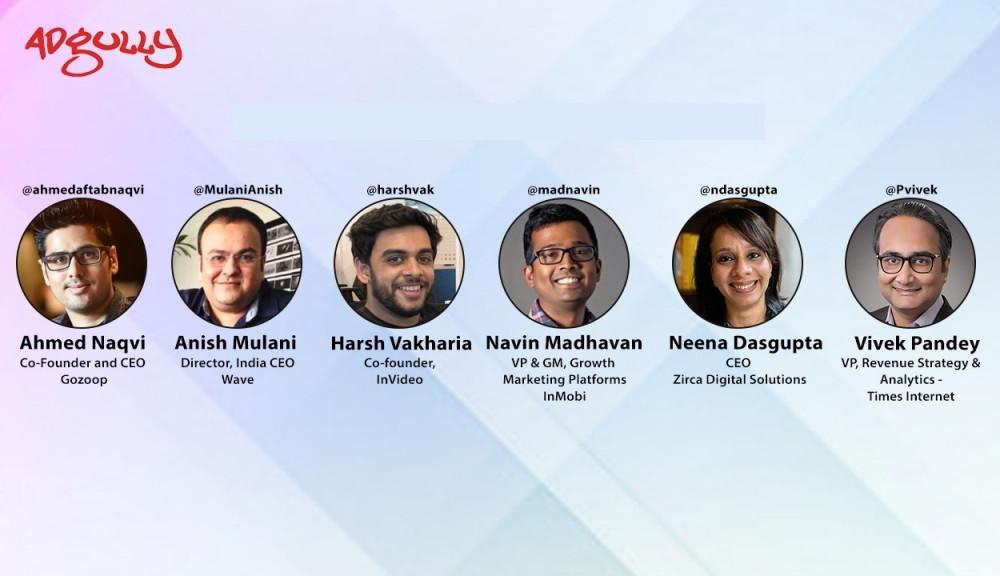


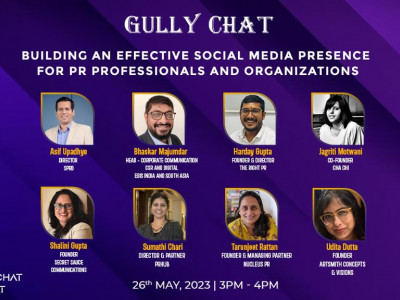
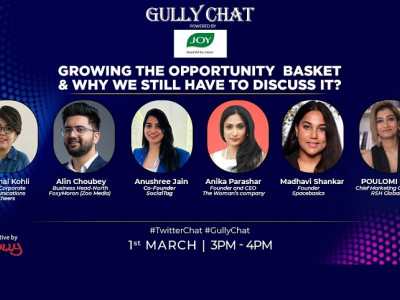
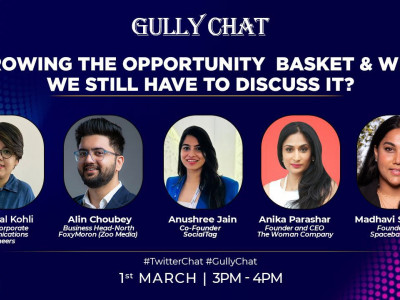




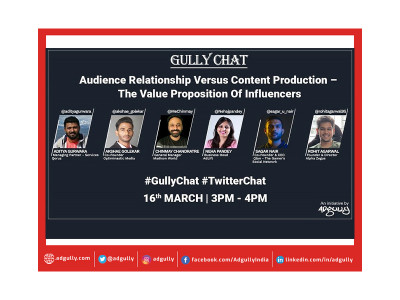


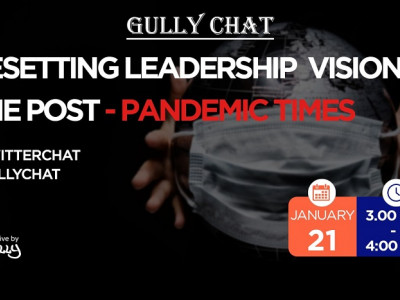

Share
Facebook
YouTube
Tweet
Twitter
LinkedIn